|
The World War II Memorial honors the sacrifice and determination of a nation and a generation during the middle part of the twentieth century. Located along the ceremonial entrance, one finds 24 bronze bas-reliefs created by sculptor Ray Kaskey. His work depicts both home front and battle scenes highlighting that sacrifice and determination. The following reliefs appear along the south side of the ceremonial entrance and illustrate images associated with the Pacific Theater of the war.
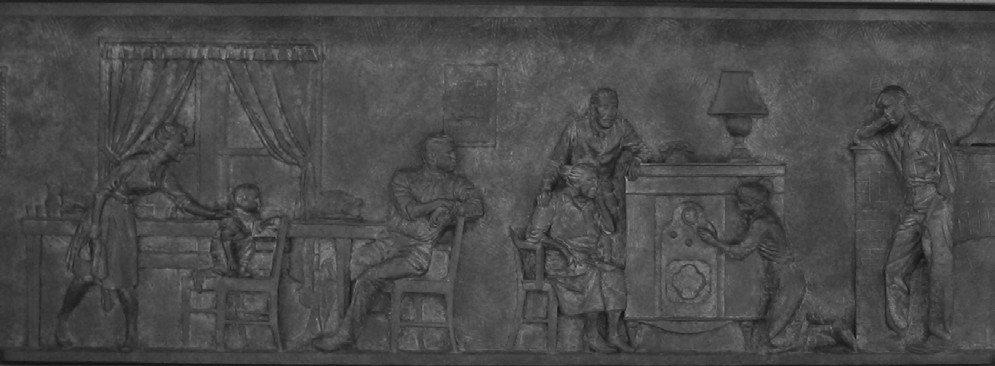
Pearl Harbor December 7, 1941, became a day that thrust the United States into a war that had been raging across the globe for nearly a decade. The United States offered its allies limited help until that point, through the Lend Lease program. The Japanese attack against the U.S. Navy’s Pacific Fleet at Pearl Harbor shocked and enraged a nation, prompting a Congressional declaration of war. 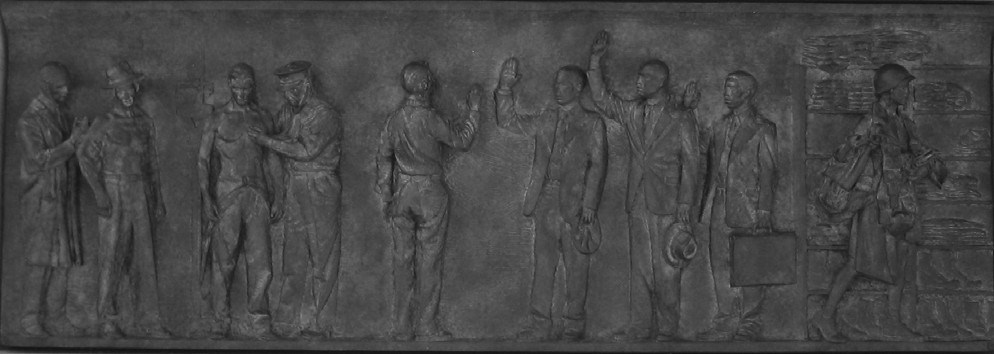
Enlistment Following the attack on Pearl Harbor, vast numbers of Americans, anxious to defend their country, enlisted in the Armed Forces. Despite high volunteer rates, the draft, initiated October16, 1940, became the military’s answer for manpower shortages. Men and women, became members of the Army, Navy, Marine Corps, Coast Guard, and Merchant Marines. 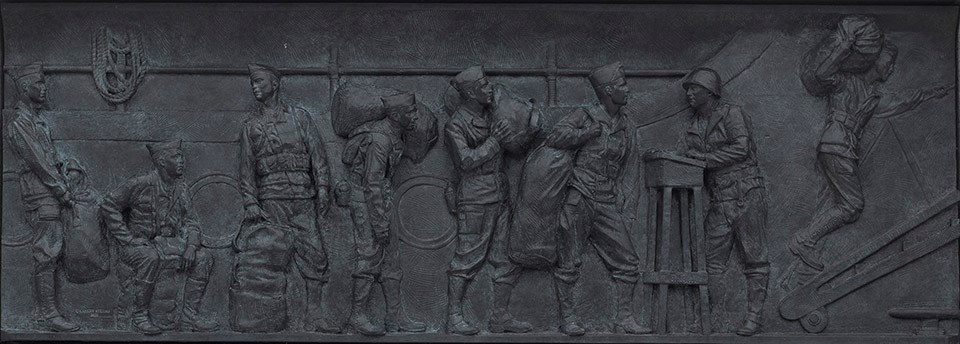
Embarkation Millions of Americans joined the military services at the onset of World War II. After extensive training at home, these brave men and women boarded ships, embarking on their crusade against tyranny and oppression. Luxury liners, such as the R.M.S. Queen Mary, served as cramped transport vessels taking our troops “over there.” 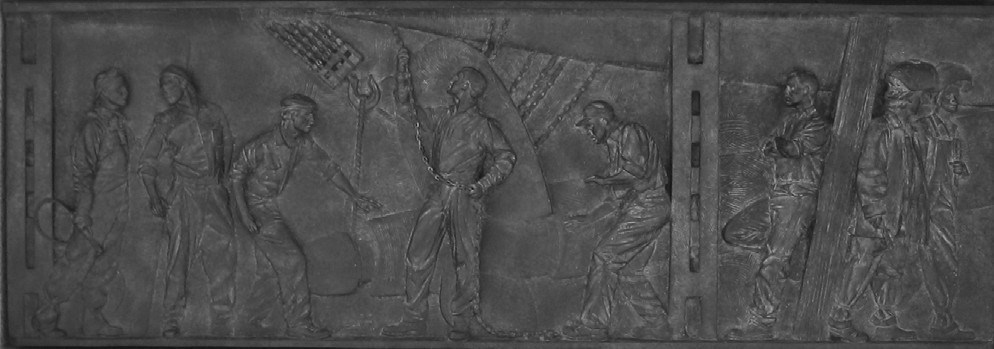
Ship Building In order to assist our allies, President Franklin Roosevelt established a policy of lending them war materiel. To transport that materiel overseas, American shipyards boosted production dramatically to meet the demand. Ship construction was not limited to transport vessels, however. Following the devastating attack at Pearl Harbor, and throughout the war, warships became equally important. 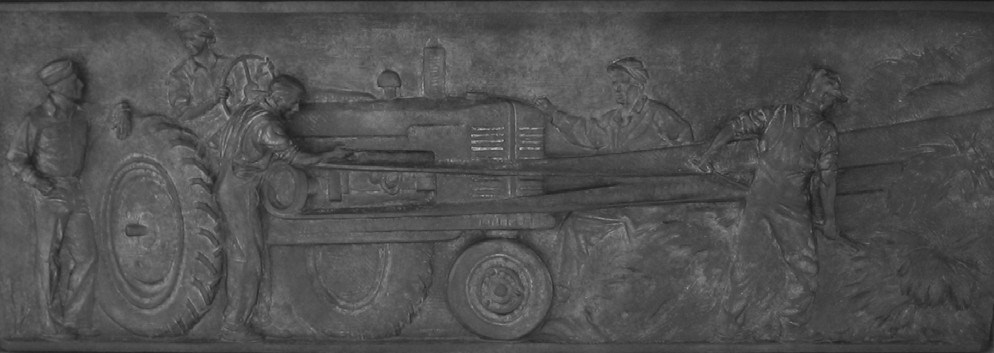
Agriculture War raged across the globe, creating desperate agricultural needs. U.S. allies receiving aid through the “lend lease” program, found food and other agricultural products equally as important as war materiel. In order to meet the global needs, American farms, recovering from the depression, became the breadbasket for the world. 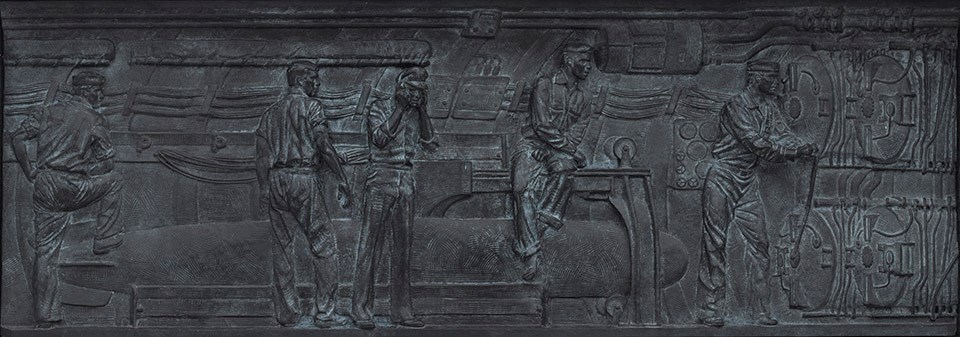
Submarine Warfare The United States Navy had a difficult time recovering from Pearl Harbor. Battleships, the rulers of the sea, had been decimated, forcing aircraft carriers, cruisers, destroyers, and submarines to take the lead. Submarines became extremely effective in stealthily targeting enemy shipping. These underwater vessels proved cramped and uncomfortable for the brave sailors who manned them. 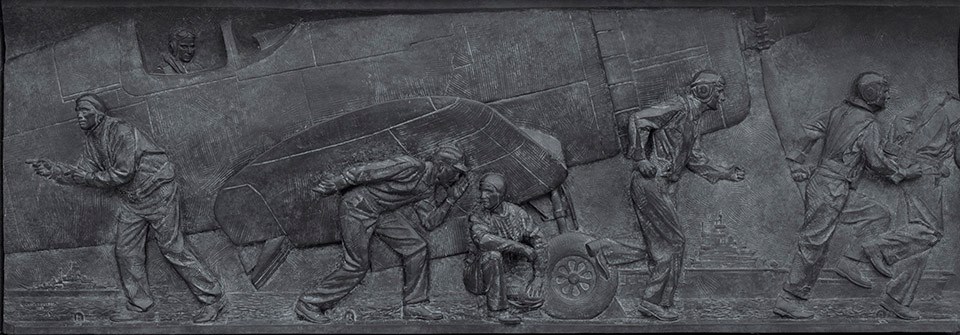
Navy in Action The naval war in the Pacific evolved dramatically during the early months of the war. Battleships that previously dominated the sea, took a back seat to the aircraft carrier. Carriers had the ability to deliver massive amounts of fire power at great distances. This new style of naval warfare played a dramatic role in the success of the United States strategy of hopping from one island to another. 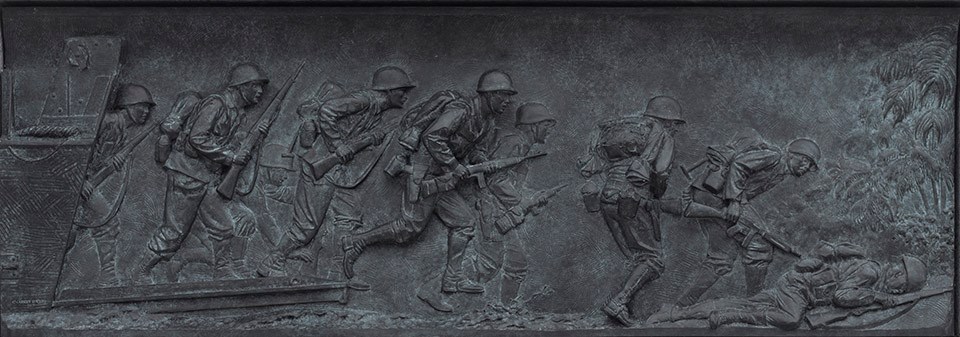
Amphibious Landing The United States, in order to liberate Japanese occupied territory throughout the Pacific and bring an end to the war, adopted a new strategy of fighting. Island hopping entailed amphibious landings that deposited the troops and equipment required to capture the islands and the creation of air bases. Once secured, the island became the staging ground for the next series of attacks moving closer to Japan. Jungle Warfare (Image coming soon) After the troops landed on the beaches, they found themselves fighting in the middle of dense jungles. Jungle warfare proved to be a miserable experience for most of the veterans that endured it. The hot, humid climate and disease carrying insects combined with a well-fortified enemy, to make fighting in the jungles less than enjoyable. 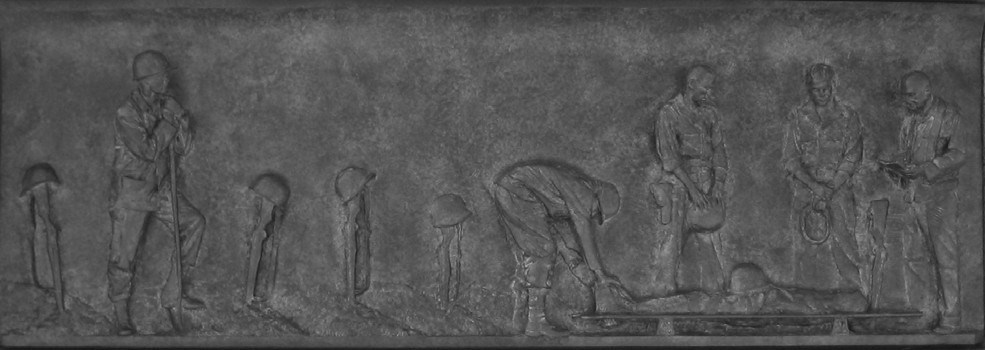
Field Burial Thousands of American soldiers died fighting in the jungles of the Pacific Theater. Logistically, it was impossible to immediately return fallen heroes to their families back home. Field burials became necessary in order to deal with the rising number of combat dead. The upturned M-1 Garand rifle, with the helmet placed on top, served as the temporary tombstone for many troops. 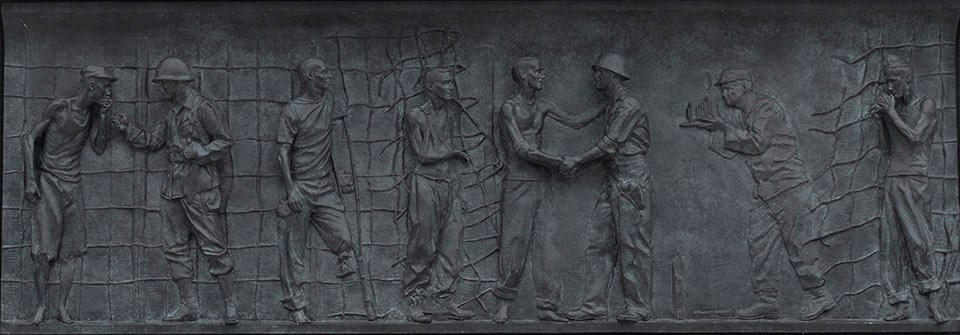
Liberation Throughout the course of the war, thousands of U.S. servicemen and women were taken prisoner. Whether they were shot-down pilots from aircraft carriers, rescued sailors from torpedoed ships, or captured soldiers from Bataan, they found themselves confined in Japanese prison camps. Liberation came late in the war for many of these malnourished, poorly-treated Americans. 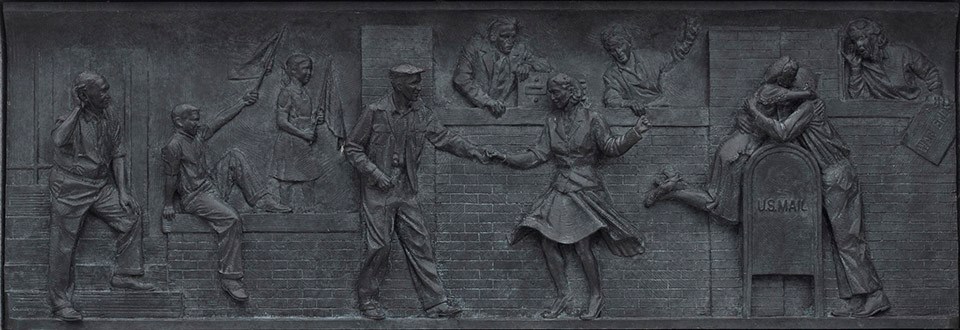
V-J Day After more than four miserable years of hard fighting against a determined foe, word of a Japanese surrender arrived in the Pacific on August 14, 1945. Aboard the U.S.S. Missouri on September 2, 1945, Japanese government representatives signed documents officially ending the war. Each day, important in U.S. and world history, became dates of great celebration known as “Victory - Japan Day” or “V-J Day”. |
Last updated: May 21, 2020
